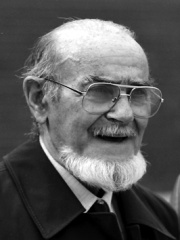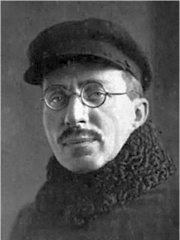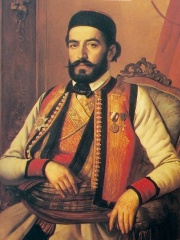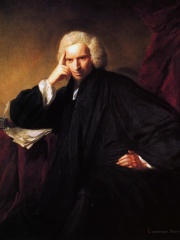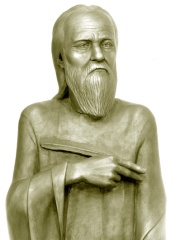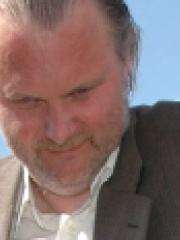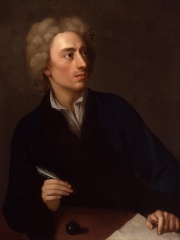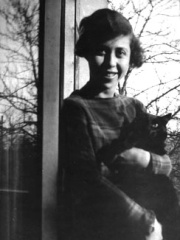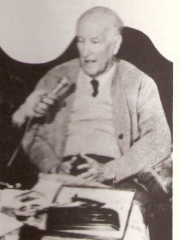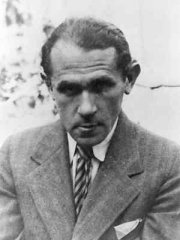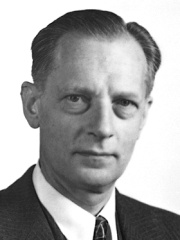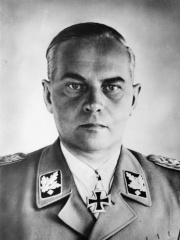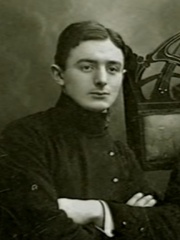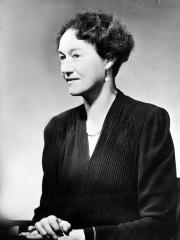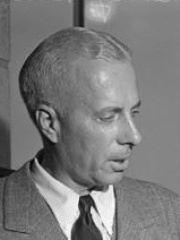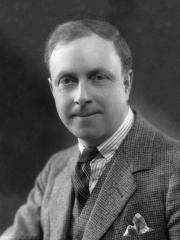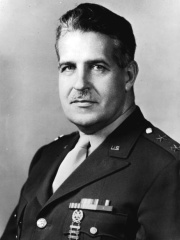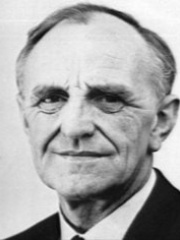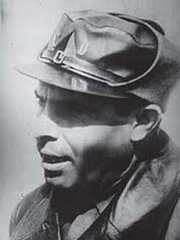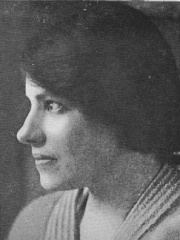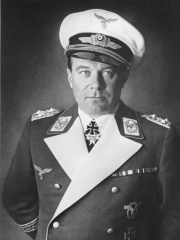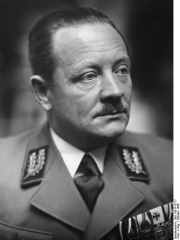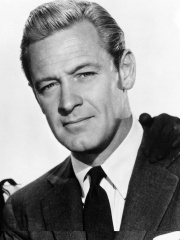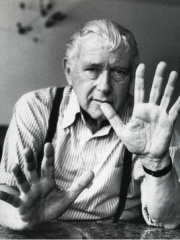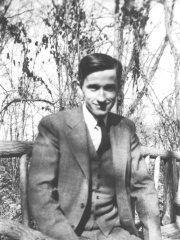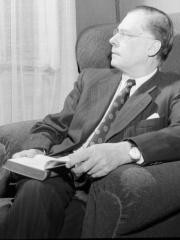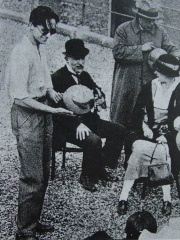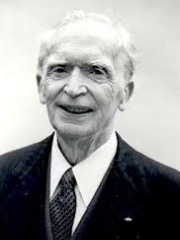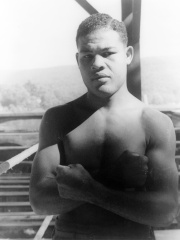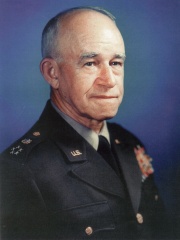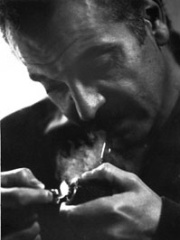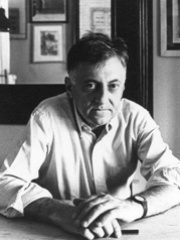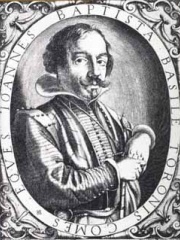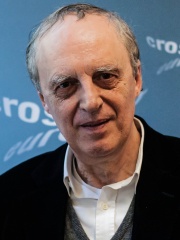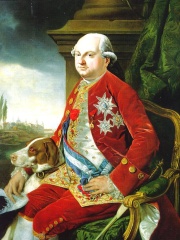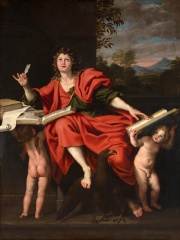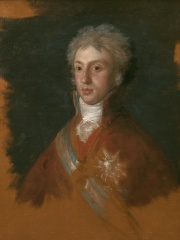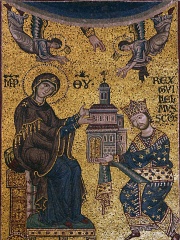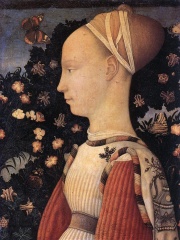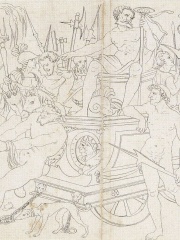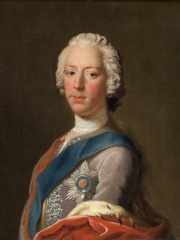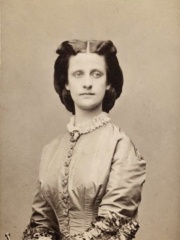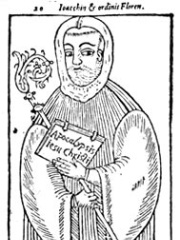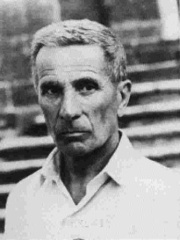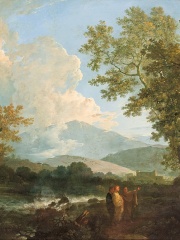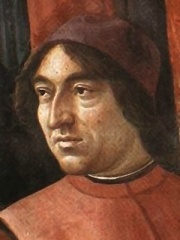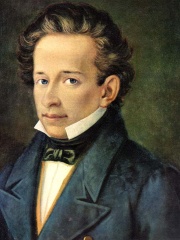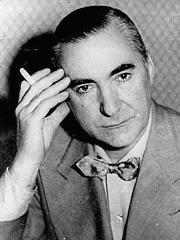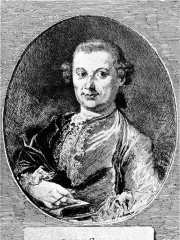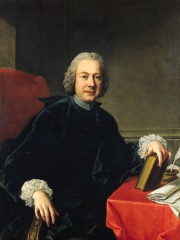WRITER
Eugenio Montale
1896 - 1981
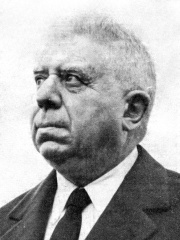
 Eugenio Montale
Eugenio Montale
Eugenio Montale (Italian: [euˈdʒɛːnjo monˈtaːle]; 12 October 1896 – 12 September 1981) was an Italian poet, prose writer, editor and translator. Read more on Wikipedia
His biography is available in 85 different languages on Wikipedia. Eugenio Montale is the 649th most popular writer (down from 544th in 2024), the 818th most popular biography from Italy (down from 682nd in 2019) and the 52nd most popular Italian Writer.
Eugenio Montale was a twentieth-century Italian poet. He is most famous for his use of terza rima in his poetry.
Memorability Metrics
Page views of Eugenio Montale by language
Among WRITERS
Among writers, Eugenio Montale ranks 649 out of 7,302. Before him are Tibor Sekelj, Anton Makarenko, Petar II Petrović-Njegoš, Laurence Sterne, Nestor the Chronicler, and Klaus Mann. After him are Jon Fosse, Alexander Pope, Irène Némirovsky, Jacob L. Moreno, Vicente Aleixandre, and Bruno Schulz.
Most Popular Writers in Wikipedia
Go to all RankingsTibor Sekelj
1912 - 1988
HPI: 71.14
Rank: 643
Anton Makarenko
1888 - 1939
HPI: 71.13
Rank: 644
Petar II Petrović-Njegoš
1813 - 1851
HPI: 71.12
Rank: 645
Laurence Sterne
1713 - 1768
HPI: 71.11
Rank: 646
Nestor the Chronicler
1056 - 1106
HPI: 71.11
Rank: 647
Klaus Mann
1906 - 1949
HPI: 71.10
Rank: 648
Eugenio Montale
1896 - 1981
HPI: 71.10
Rank: 649
Jon Fosse
1959 - Present
HPI: 71.09
Rank: 650
Alexander Pope
1688 - 1744
HPI: 71.09
Rank: 651
Irène Némirovsky
1903 - 1942
HPI: 71.09
Rank: 652
Jacob L. Moreno
1889 - 1974
HPI: 71.09
Rank: 653
Vicente Aleixandre
1898 - 1984
HPI: 71.07
Rank: 654
Bruno Schulz
1892 - 1942
HPI: 71.03
Rank: 655
Contemporaries
Among people born in 1896, Eugenio Montale ranks 27. Before him are Carl Ferdinand Cori, Felix Steiner, Dziga Vertov, Charlotte, Grand Duchess of Luxembourg, Howard Hawks, and A. J. Cronin. After him are Leslie Groves, Donald Winnicott, Buenaventura Durruti, Anna Anderson, Ernst Udet, and Erich Koch. Among people deceased in 1981, Eugenio Montale ranks 23. Before him are William Holden, Marcel Breuer, Max Delbrück, Karl Böhm, Natalie Wood, and A. J. Cronin. After him are René Clair, Joseph Murphy, Joe Louis, Omar Bradley, Samuel Barber, and Georges Brassens.
Others Born in 1896
Go to all RankingsCarl Ferdinand Cori
CHEMIST
1896 - 1984
HPI: 72.81
Rank: 21
Felix Steiner
MILITARY PERSONNEL
1896 - 1966
HPI: 72.47
Rank: 22
Dziga Vertov
FILM DIRECTOR
1896 - 1954
HPI: 72.03
Rank: 23
Charlotte, Grand Duchess of Luxembourg
POLITICIAN
1896 - 1985
HPI: 71.81
Rank: 24
Howard Hawks
FILM DIRECTOR
1896 - 1977
HPI: 71.46
Rank: 25
A. J. Cronin
WRITER
1896 - 1981
HPI: 71.20
Rank: 26
Eugenio Montale
WRITER
1896 - 1981
HPI: 71.10
Rank: 27
Leslie Groves
ENGINEER
1896 - 1970
HPI: 70.99
Rank: 28
Donald Winnicott
PSYCHOLOGIST
1896 - 1971
HPI: 70.89
Rank: 29
Buenaventura Durruti
SOCIAL ACTIVIST
1896 - 1936
HPI: 70.70
Rank: 30
Anna Anderson
CELEBRITY
1896 - 1984
HPI: 70.60
Rank: 31
Ernst Udet
PILOT
1896 - 1941
HPI: 70.41
Rank: 32
Erich Koch
POLITICIAN
1896 - 1986
HPI: 70.23
Rank: 33
Others Deceased in 1981
Go to all RankingsWilliam Holden
ACTOR
1918 - 1981
HPI: 72.01
Rank: 17
Marcel Breuer
ARCHITECT
1902 - 1981
HPI: 71.86
Rank: 18
Max Delbrück
PHYSICIST
1906 - 1981
HPI: 71.79
Rank: 19
Karl Böhm
CONDUCTOR
1894 - 1981
HPI: 71.63
Rank: 20
Natalie Wood
ACTOR
1938 - 1981
HPI: 71.60
Rank: 21
A. J. Cronin
WRITER
1896 - 1981
HPI: 71.20
Rank: 22
Eugenio Montale
WRITER
1896 - 1981
HPI: 71.10
Rank: 23
René Clair
FILM DIRECTOR
1898 - 1981
HPI: 70.96
Rank: 24
Joseph Murphy
WRITER
1898 - 1981
HPI: 70.78
Rank: 25
Joe Louis
BOXER
1914 - 1981
HPI: 70.75
Rank: 26
Omar Bradley
MILITARY PERSONNEL
1893 - 1981
HPI: 70.31
Rank: 27
Samuel Barber
COMPOSER
1910 - 1981
HPI: 69.97
Rank: 28
Georges Brassens
SINGER
1921 - 1981
HPI: 69.58
Rank: 29
In Italy
Among people born in Italy, Eugenio Montale ranks 818 out of 5,161. Before him are Aldo Rossi (1931), Giambattista Basile (1566), Dario Argento (1940), Ferdinand, Duke of Parma (1751), Domenichino (1581), and Louis I of Etruria (1773). After him are William II of Sicily (1153), Pisanello (1395), Quintus Sertorius (-126), Charles Edward Stuart (1720), Princess Maria Annunciata of Bourbon-Two Sicilies (1843), and Joachim of Fiore (1135).
Others born in Italy
Go to all RankingsAldo Rossi
ARCHITECT
1931 - 1997
HPI: 71.17
Rank: 812
Giambattista Basile
WRITER
1566 - 1632
HPI: 71.14
Rank: 813
Dario Argento
FILM DIRECTOR
1940 - Present
HPI: 71.13
Rank: 814
Ferdinand, Duke of Parma
POLITICIAN
1751 - 1802
HPI: 71.12
Rank: 815
Domenichino
PAINTER
1581 - 1641
HPI: 71.11
Rank: 816
Louis I of Etruria
POLITICIAN
1773 - 1803
HPI: 71.11
Rank: 817
Eugenio Montale
WRITER
1896 - 1981
HPI: 71.10
Rank: 818
William II of Sicily
POLITICIAN
1153 - 1189
HPI: 71.09
Rank: 819
Pisanello
PAINTER
1395 - 1455
HPI: 71.06
Rank: 820
Quintus Sertorius
POLITICIAN
126 BC - 72 BC
HPI: 71.05
Rank: 821
Charles Edward Stuart
POLITICIAN
1720 - 1788
HPI: 71.03
Rank: 822
Princess Maria Annunciata of Bourbon-Two Sicilies
POLITICIAN
1843 - 1871
HPI: 71.02
Rank: 823
Joachim of Fiore
OCCULTIST
1135 - 1202
HPI: 71.02
Rank: 824
Among WRITERS In Italy
Among writers born in Italy, Eugenio Montale ranks 52. Before him are Dino Buzzati (1906), Titus Pomponius Atticus (-110), Aulus Gellius (123), Poliziano (1454), Gabriele Amorth (1925), and Giambattista Basile (1566). After him are Giacomo Leopardi (1798), Francesca da Rimini (1259), Gaius Valerius Flaccus (45), Curzio Malaparte (1898), Carlo Gozzi (1720), and Pietro Metastasio (1698).
Dino Buzzati
1906 - 1972
HPI: 71.58
Rank: 46
Titus Pomponius Atticus
110 BC - 32 BC
HPI: 71.58
Rank: 47
Aulus Gellius
123 - 180
HPI: 71.50
Rank: 48
Poliziano
1454 - 1494
HPI: 71.34
Rank: 49
Gabriele Amorth
1925 - 2016
HPI: 71.25
Rank: 50
Giambattista Basile
1566 - 1632
HPI: 71.14
Rank: 51
Eugenio Montale
1896 - 1981
HPI: 71.10
Rank: 52
Giacomo Leopardi
1798 - 1837
HPI: 71.01
Rank: 53
Francesca da Rimini
1259 - 1285
HPI: 70.99
Rank: 54
Gaius Valerius Flaccus
45 - 95
HPI: 70.97
Rank: 55
Curzio Malaparte
1898 - 1957
HPI: 70.95
Rank: 56
Carlo Gozzi
1720 - 1806
HPI: 70.91
Rank: 57
Pietro Metastasio
1698 - 1782
HPI: 70.79
Rank: 58
